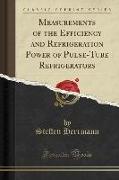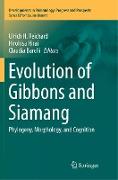Measurements of the Efficiency and Refrigeration Power of Pulse-Tube Refrigerators (Classic Reprint)
BücherAngebote / Angebote:
Excerpt from Measurements of the Efficiency and Refrigeration Power of Pulse-Tube RefrigeratorsThe principle of operation, as given by Gifford and coworkers [1-5] and by Lechner and Ackermann is qualitatively simple. The basic pulse tube, shown in Figure 1, is closed at the top end, where a good heat - transfer surface must exist between the working gas (helium is best) and the surroundings, in order to dissipate heat. The bottom, Open, end also has a good heat transfer surface to absorb heat from its surroundings. The open end is connected to a pressure - wave generator (in our case a compressor) via a regenerator. During the compression part of the cycle any element of gas in the pulse tube moves toward the closed end and at the same time experiences a temperature rise due to adiabatic compression. At that time the pressure is at its highest value. During the maximum in the pressure wave the gas is cooled somewhat by heat transfer to the tube walls. In the expansion part of the cycle the same element of gas moves toward the open end of the pulse tube and experiences cooling due to adiabatic expansion. During the pressure minimum the gas is warmed by heat transfer from the tube walls. The net result of cycling the pressure in this manner is a shuttle heat transfer process in which each element of gas transfers heat toward the closed end of the pulse tube. The heat pumping mechanism described here requires that the thermal contact between the gas and tube be imperfect, so that the compression and expansion processes are somewhere between isothermal and adiabatic. The best intermediate heat transfer generally occurs when the product of pulse frequency and thermal relaxation time between the gas and the tube walls is approximately unity.The early work on this type of refrigerator was done using a valved compressor and a rotary valve to switch the pulse tube alternately between the high and low pressure sides of the compressor, the pressure wave was approximately a square wave. Such a technique lowers the overall efficiency since no work is recovered in the expansion process. However the actual refrigeration process is relatively efficient because of the short times for compression and expansion, and the long times for heat transfer at the pressure plateaus. The lowest temperature of 124 K was achieved in 1967 by Longsworth [a] with a pulse tube 19 mm in diameter by 318 mm long. The high and low pressures were mpa and mpa, respectively, for a pressure ratio of at a pulse frequency of Hz. At the low temperature limit of 124 K, a gross heat pumping rate of 5 w was obtained which was totally consumed by loss terms such as conduction and regenerator ineffectiveness.About the PublisherForgotten Books publishes hundreds of thousands of rare and classic books. Find more at www.forgottenbooks.comThis book is a reproduction of an important historical work. Forgotten Books uses state-of-the-art technology to digitally reconstruct the work, preserving the original format whilst repairing imperfections present in the aged copy. In rare cases, an imperfection in the original, such as a blemish or missing page, may be replicated in our edition. We do, however, repair the vast majority of imperfections successfully, any imperfections that remain are intentionally left to preserve the state of such historical works.
Folgt in ca. 5 Arbeitstagen


![The Taste, a Temperance Tale [With Other Tales in Prose and Verse] by the Author of 'The Father's Message'](https://support.digitalhusky.com/media/annotations/sorted/427/42705419/CHSBZCOP0342705419.jpg)

